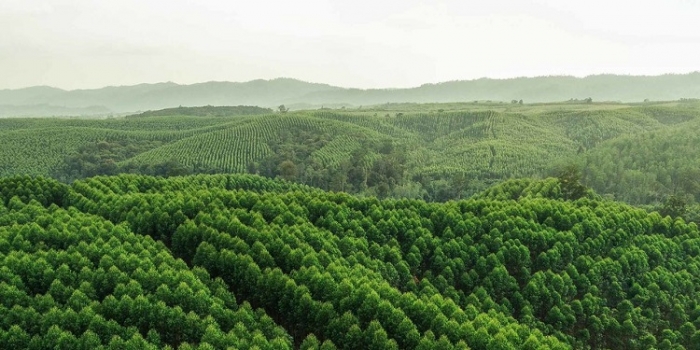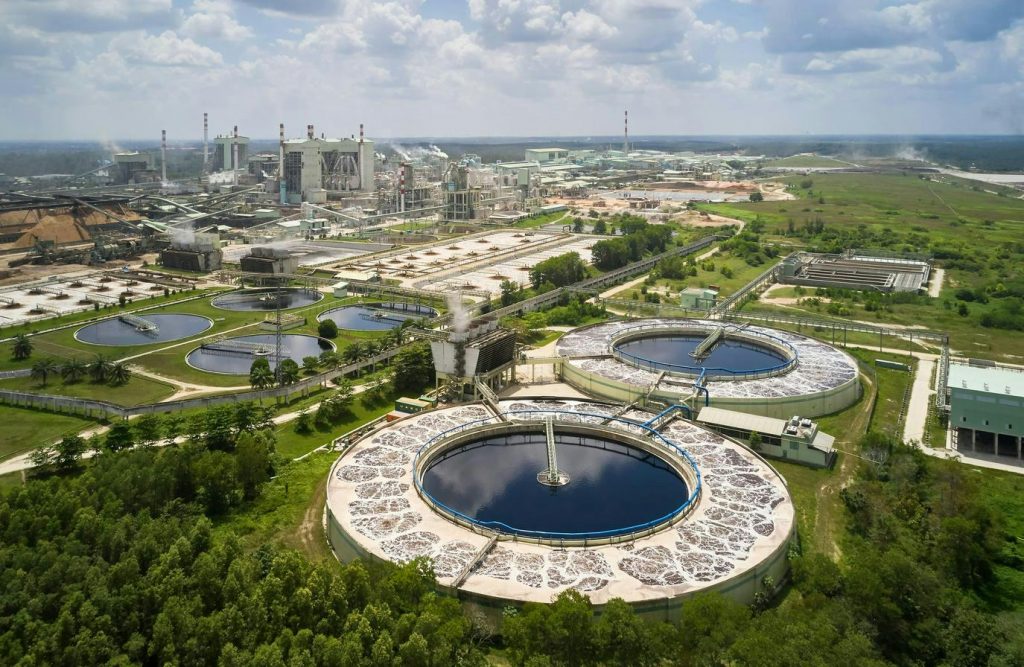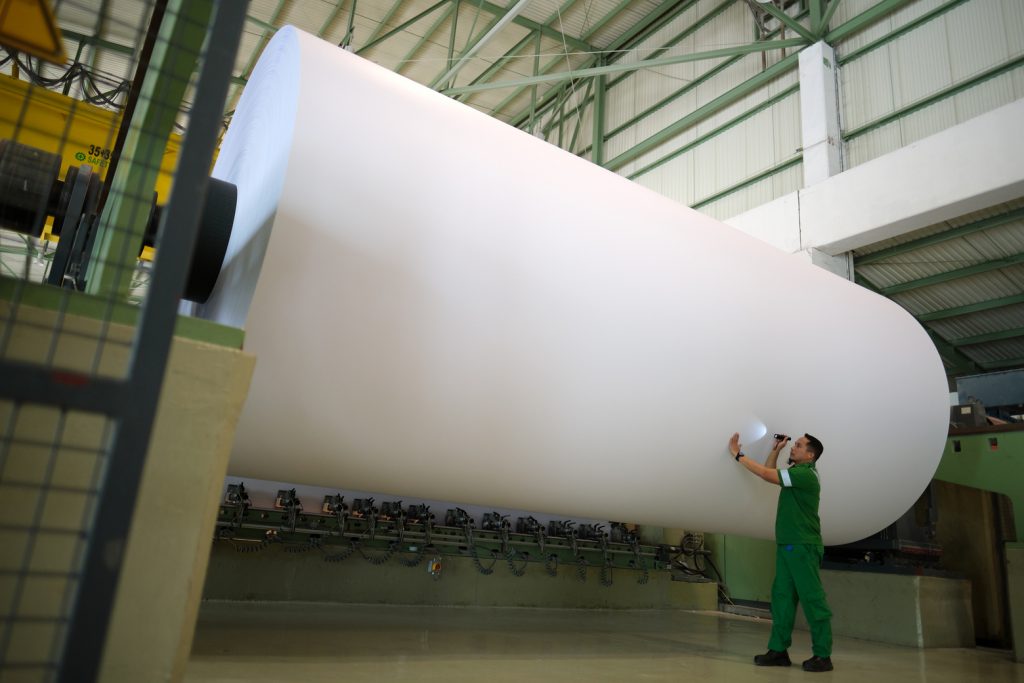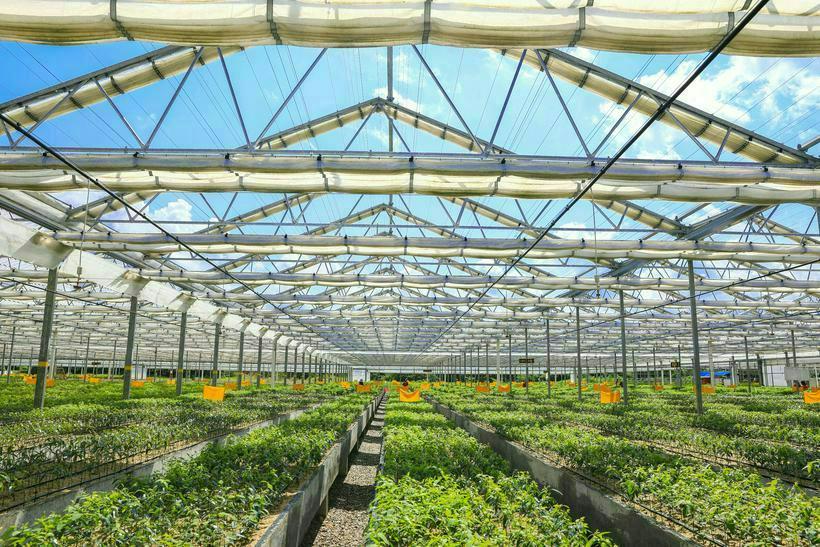Engaging Conversations on Viscose
As part of ongoing global and regional efforts to demonstrate viscose production as clean, circular, renewable and sustainable, Sateri and Asia Pacific Rayon (APR) ramped up efforts in engaging its...

Latest updates on what's happening in RGE Group

Having witnessed the dedication of staff and how sustainability is deeply embedded in APRIL Group’s operations in Indonesia, a Master of International Economic Policy candidate at Columbia University and former staff of the UN Environment Programme wrote a commentary sharing views on how like-minded companies and stakeholders in the pulp and paper industry can pave a clearer path to meeting the climate challenge. The following commentary was first published in the Jakarta Globe on 13 August 2021.
Like many, I consume a vast number of products daily that are made from pulp and paper. For example, I am still fond of holding printed books instead of a Kindle. Last semester, I wrote a macroeconomics final exam on A4 paper and then uploaded a scan of the submission.
Few of us have a grasp of how these essential products are made, let alone that some large-scale producers of forest products are introducing more sustainable solutions to drive positive economic, environmental and social changes at scale.
Over the past four decades, there has been an upturn in the fortunes of the pulp and paper industry globally. But this has been accompanied by negative commentary on the industry’s environmental impacts and a common misperception that paper products come from natural forests and lead to deforestation.
Speaking from on-the-ground visits this summer in Indonesia, I discovered that paper products come from sustainably managed plantations, where major pulp and paper companies operate plantations on an industrial scale to sustain their business, and the sector’s contribution to the Indonesian economy, for decades to come.

The Indonesia-based operations of APRIL Group, one of the largest, most technologically advanced and efficient makers of pulp and paper products in the world.
The company I studied – Asia Pacific Resources International Limited, or APRIL Group – is licensed to manage approximately 448,000 hectares of sustainable plantations in Riau, Sumatra. Each year, around 90,000 ha are harvested while about 200 million seedlings are replanted, with trees harvested five years after being planted. Paper and pulp products are produced from two specific types of plantation trees in its Indonesian plantations – acacia and eucalyptus. Acacia trees possess sound fiber qualities for writing paper, while eucalyptus can be used for viscose and paper products.
Another common misperception is that significant pollution is generated in making the paper and pulp, including wastewater and air pollution that threatens human health. During the 20th century, an economic development model emerged where production and resulting pollution came first and environmental protection followed. When I was a child in China, stories of small-scale paper and pulp companies secretly dumping wastewater into the city river were recurring news in my country.
In Indonesia, I leaned into briefings with chemical engineers at APRIL’s mill to understand the details of the production process. I was able to see with my own eyes that that high-performing mills are embracing sustainability and constantly seeking to improve energy consumption efficiency by investing in better and leaner infrastructure.
From a regulatory perspective, as the economic importance of the pulp and paper industry rises and environmental standards become more important, it has become nearly impossible not to abide by national laws and regulations, especially in the digital age.
At the mill where I visited, water pollutant indicators are sent to officials at the Indonesian Ministry of Environment and Forestry via a real-time monitoring portal. For large companies, reputational risk pushes them to keep up with environmental regulations in line with stakeholders’ expectations. Investors are also coming to the table with increasingly strong requirements on environmental, social and governance issues.
This has led to a renewed discussion among all consumers, sellers, suppliers and producers of paper products about their sustainability before deciding to purchase paper products.
There are three things that I believe Indonesian paper and pulp companies can do to capture the imagination of the public and build a better understanding of how the industry is embracing sustainability.
The first is not to shy away from talking directly to consumers and start from the demand side. For APRIL Group, the products that the company manufactures go beyond its flagship Paper One product, touching education, sanitation, security, and communication. But it is not evidently known that its products are made from pulp from its plantations in Indonesia.

APRIL Group’s mills produce up to 2.8 million tonnes of pulp and 1.15 million tonnes of paper annually.
One of the few people I have so far heard from who explicitly connected all the dots in the chain is the company founder Sukanto Tanoto. Speaking to a group of international students in Singapore, he painted a vivid picture of the different roles that paper plays in people’s lives. The reality, he explained, is that paper materials are an indispensable component in a vast range of consumer products.
The second would be to engage policymakers and seek win-win collaboration on issues like urban waste and recycled paper production. This is important because of the potential for wastepaper to be used as a raw material for paper production.
Recycling fiber-based products as a raw material for papermaking can have positive impacts on water and energy consumption and greenhouse gas emissions. So is it possible for companies to further cooperate with policymakers who are desperately soliciting waste solutions?
Further studies are required here, but the waste policy landscape in developing countries, which I studied during my time at the UN, does not always include a market-oriented approach for solid waste. If the large industry players opted to substitute some percentage share of virgin fiber with recycled pulp, it would generate multiple benefits including feedstock for the production of different classes of paper while supporting the call for a more circular economy. It would also promote deeper ties between companies, policymakers and consumers.
The third is to make rich sustainability data more visible. The company I spent the summer with uses a production-protection approach to guide its management of the landscape. Through this integrated approach, productive fiber plantations managed by APRIL create a buffer zone that reduces human encroachment, illegal logging and fires in protected forest areas. The plantations also generate economic returns that can be re-invested in conservation programs while also providing employment opportunities.
I was lucky to be able to finally see this model with my own eyes during my visit. The sheer scale of the operation and the investment both on the human and capital fronts, is admirable. But how can we make this model one click away from reality?
Alipay’s Ant Forest initiative is a model that is worth noting. In the Ant Forest model, consumers accumulate green points on the Ant Forest App by living sustainably, riding a bike or opting out of plastics in take-away food. With enough points gathered, a tree will be planted in their name, purchased by Alipay from credited foundations in China.
Ant Forest then makes the satellite images available on its App so all stakeholders, such as the tree seedlings providers and consumers who have planted the trees, can view the status of the trees in real time.
This works because individuals in this story begin to own the issues, the history and the success of Ant Forest and a much bigger purpose is shared among all players. The logic is simple: if companies put a business model out there that positively impacts society successfully, then people will support you.
As I continued to be impressed by the scientists in the industry, I also firmly believe in the value of investing in social-economic science. Mark Carney, the former Governor of the Bank of England, said: ‘The more we invest with foresight, the less we will regret in hindsight.’ The diverse people who sometimes hold opposite perspectives help the company in forging a more informed foresight.
All industries need to become ready to meet the climate challenge. The paper and pulp industry is an example of the multi-faceted and complex reality of the sustainability journey it and other industries are navigating. The private sector has increasingly engaged with the public sector and the broader society in making a compelling business case for sustainability. It may be time to move from good to great.

APRIL Group’s Indonesia operations PT Riau Andalan Pulp and Paper has nurseries that grows 200 million seedlings annually for its sustainably managed renewable plantations.
—
Hao Chen is a Master of International Economic Policy candidate at Columbia University and is a former staff of the UN Environment Programme.
The above views expressed are Hao Chen’s.